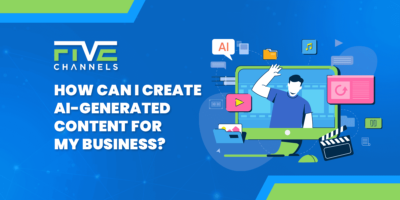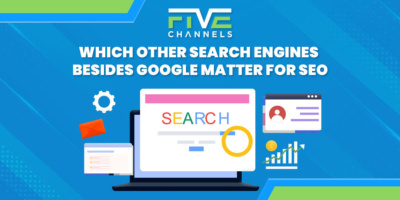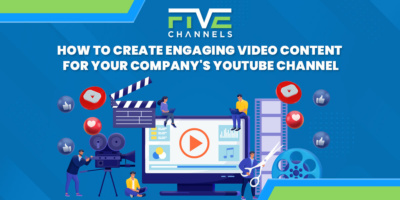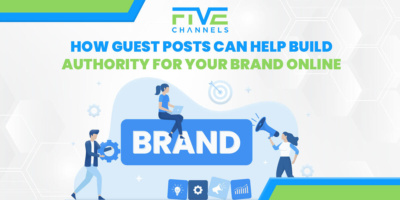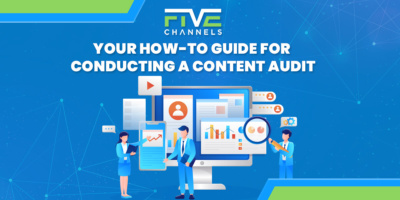Have you ever had that eerie moment where you’ve sat at the dinner table and you’re talking about having Mexican food for dinner. Then you go onto Amazon to check up on a delivery you have due, and you see it. A massive banner ad for home delivery Mexican food?
How did they know?
Microtargeting is a huge aspect of online marketing. The social media advertising market was worth 43.78 billion dollars in 2017.
With companies throwing that much money around, many businesses want to cut through the noise and target the right customers, but many don’t even know what microtargeting is or why it’s useful for their business.
With that in mind, learning about microtargeting and how it works could help you market in ways you’ve never dreamed of. Facebook is not flying satellites over your home and listening to your table conversation, but instead, businesses are targeting customers in new and exciting ways.
 What Is Microtargeting?
What Is Microtargeting?
Before we can dive into the ins and outs of microtargeting, first it’s important to understand exactly what it is.
Microtargeting is a strategy used by online marketers to capitalize on consumers. They do this based on specific attributes. They use everything from a customer’s online profile. This includes their demographic, geographic and psychographic data.
They use this data to predict everything from buying behaviors, opinions, and interests. They try to influence that behavior by combining it with a super-targeting advertising campaign.
If that sounds a little intense, look at it this way. It lets you set up a special set of parameters to build an audience. Facebook is selling all the data it acquires from you. This includes pages you like, things that you share any information you enter in, direct to advertisers.
When you are using a service, if you aren’t paying for it, you are the product.
What is the Goal of Microtargeting?
With social media, different customers have different triggers, opinions, and interests. The goal of microtargeting is to use data alongside predictive analytics.
This allows advertisers to put together a more profitable and targeting marketing campaign, personalized for each customer.
The idea is that personalized campaigns are going to be more effective. This helps to increase the customer’s engagement levels and has a better return on investment.
Facebook tracks most of your habits, interests, beliefs, and hobbies. Advertisers can then use this to create a truly believable marketing campaign.
Understanding How Ads Find You
Of the different advertising platforms out there, Facebook uses microtargeting the most. Facebook has more than 2 billion daily users. There is a huge audience which can use this to make miniature audiences.
These ultra-specific audiences are then used for Facebook ad campaigns.
The Three-Step Process
When you start to analyze how ads work, there are really three main ways in which Facebook ad platform allows advertisers to target their audience.
1. Setting up the Target Audience
One of the first ways Facebook helps advertisers target you is through their advertising platform tools. Advertisers create a target audience using filters like gender, age, and location.
That is the very first bit of information you give Facebook upon signing up for an account.
Within this, they can then also choose to exclude groups based on different demographics, behaviors and interests. This can be anything from loving video games to someone’s religious or political beliefs.
These attributes get selected through your online activities. This isn’t always on Facebook’s site. Sometimes cookies from Facebook can track your activities through other websites.
Targeting is intelligent too. It can tell you have an interest in clubbing from attending an event for a dance party.
2. Adding Attribute Targeting
The second-way advertisers use microtargeting is through adding in attribute targeting from data brokers. There are a variety of different data brokers that Facebook uses, and each countries data brokers are often different.
The job of the data brokers is to set up consumer insights based on things like purchases, loyalty programs, surveys and other means of data analytics.
You will find that different sites will model different information, and it can range from anything including people who have mortgages to whether you’re divorced or married.
Even websites like Experian list on their website that they keep an updated list of new parents on its website.
3. Custom Audiences
The third technique for targeting customers through microtargeting is to use specific custom audiences. This gives you a much deeper level of control over the audience that you are targeting.
This can include uploading email addresses from regular shoppers that you may want to serve ads to or you can even add in attributes that will tie directly to that audience.
New ways to target audiences are in constant development. You can look at ads that Facebook presents to you and click the ‘why am I seeing this ad’ option. Facebook ad transparency is a big factor, and this helps to give you insight into why you see that ad.
Why Is Microtargeting Powerful?
With people spending an average of 35 minutes a day on Facebook it’s easy to see why so many people use Facebook advertising. However the real power in the advertising comes from Facebook’s ability to niche down your audience.
Facebook has built a machine that users are happy to give up huge information about how they operate in their daily lives. Facebook gives advertisers an almost perfect roadmap of what a user’s interest are.
By understanding the complex layers of microtargeting, you can tap into ultra-specific audiences. This allows you to customize your advertising to that specific audience.
If it happened in the real world it’d be like you walking into a supermarket and somebody had a 30-minute conversation about your life story, and then relaying that information to the shop who would then customize it’s product offering to you, based on the likelihood of you having an interest in those products and buying them.
Spooky.
Dangers of Microtargeting
Understanding all that, you might be thinking as an advertiser, great news! With new Facebook users signing up every minute you have a huge potential market to tap into. What’s not to love about microtargeting?
However, as with any forms of sensitive customer data and advertising, there are two tales to every story.
It’s often believed that the best marketing tactic is to niche down, create a micro-targeted audience and then customize your product offering to that customer. The issue with microtargeting is that just because you have the tools to target an ultra-specific audience, doesn’t mean you should.
With the cost attribution to a super specific audience being rather high, you may find that being too specific limits your audience, leading to not enough exposure to customers and you end up paying through the nose for it.
Why Too Much Detail Can Be a Bad Thing
If your campaign aims to target a very engaged audience, you might find that targeting people that have watched your videos to a fairly high completion rate is going to be enough.
You wouldn’t need to set up a big list of parameters to achieve such as:
Target customers aged 25-30
Living in a particular location
Engaged with your page in the last 30 days
Have purchased something from you in the last 60 days
Have watched a specific video you posted to 50% completion
And finally, have visited a particular page in the last ten days
While you may be able to find that ultra-specific audience by using the right Facebook tracking pixel and conversion events set up on your ad account with Facebook.
Targeting the above audience may leave you with such a small audience it’s not even worth engaging with them in the first place.
If you instead of targeting an engaged audience wanted to target high-value audiences, you instead might target people who have an average order value on your e-commerce store of over $200.
Just because you have a specific set of features available to you, doesn’t mean you should specifically use them. It’s not always a good idea.
When you have such a deep level of targeting available to you, you will find that a problem arises. As AI marketing shapes the future, this level of targeting is constantly changing.
By focusing too in-depth on the audience you are targeting, you forget to focus on what’s truly important, the content and value that is being delivered to your audience.
The Difference Between Audience and Business Insights
Here’s the challenge with insights when you are ultra-specific. Just because something works well for an ultra-specific audience, doesn’t mean those audience insights is going to convert well for your overall business.
This means it’s important to understand that microtargeting gives you audience insights, not business insights.
You can find out information like, ‘Users who view multiple different pieces of content to a high completion rate are 5x better than a cold audience’. Realistically, that discovery is common sense, of course they’ll convert better, you shouldn’t have to test that.
On the flip side, if you are finding that you are targeting a really wide audience of say over 300,000 people and you find that by testing six different messages you receive a much higher click-through-rate on one particular message. If that proposition was also a lot higher, you end up with an observation that sounds like this.
‘Users convert up to 5x better when using message X’. Now that is a business insight.
This adds a lot more value to your overall organization, not just the marketing efforts.
Focus on the Message You Deliver
What you need to watch out for as the real danger of microtargeting is to not use an ultra-specific audience as an excuse for poor planning and bad creativity or communication.
You need to make sure you aren’t becoming lazy just because you know a customer is already interested in your product. Your ads may be failing for reasons you haven’t seen.
By getting very specific with your audience, you may think you don’t need to worry about creating an ad that is going to capture their interest in your products.
However, that is completely reckless thinking. By going down this route, you may find you damage your brand more than growing it. For example, imagine if you manage to target an ultra-fan of your products.
You’ve spent months or years growing this customer from somebody with little interest into somebody who raves at you. Then they receive a piece of marketing from you that just isn’t up to scratch.
What do you think they would then think about you and your brand? This can lead them to think less of your brand, and you may end up singling them out and alienating them.
You can find now that many marketers are spending too much time and money on focusing on ultra-specific targeting at the expense of great content. Your focus should always be on delivering amazing content that delivers a great customer experience.
The creative element of your advertising should be what makes you stand out from the crowd, not your audience selection.
Don’t Give up on Microtargeting Just Yet
It’s important to consider that this strategy is here to stay. Just because there are dangers of using it doesn’t mean you shouldn’t.
By understanding what the risks are of poor marketing campaigns you can make sure that your marketing efforts work towards achieving results which aren’t tainted by lazy marketing practices.
Understanding when to use microtargeting should be your biggest takeaway and making sure to pair it with attractive marketing.
You should try to make sure your targeting is behavior based; targeting can be useful to help someone complete a step in a journey. You could use this if someone abandoned a cart halfway through checkout for example.
Just remember that while tools are incredible in helping us reach a specific audience, not to substitute them for great marketing practices. If you want to perfect your digital marketing efforts, head on over to our free digital marketing review.
Owner and Chief Marketing Officer, Jason Hall, and his team specialize in creating brand awareness / traffic and lead generation / marketing funnel and conversion optimization, while utilizing the appropriate marketing channels available within your industry. With diverse clients throughout the world, Jason's team is well connected within many industries to assist with your marketing strategies. With no long term contracts and various levels of service, Jason's team will increase the quality of your online traffic, leads, and sales.
About the author...
Located in the heart of the Emerald Coast - Destin, FL, founder and Chief Marketing Officer, Jason Hall, and his team specialize in creating brand awareness / traffic and lead generation / marketing funnel and conversion optimization / and PR campaigns, while utilizing the appropriate marketing channels available within your industry.
With diverse clients throughout the world, Jason's team is well connected within many industries to assist with your marketing strategies. With no long term contracts and various levels of service, Jason's team will increase the quality of your online traffic, leads, and sales.


